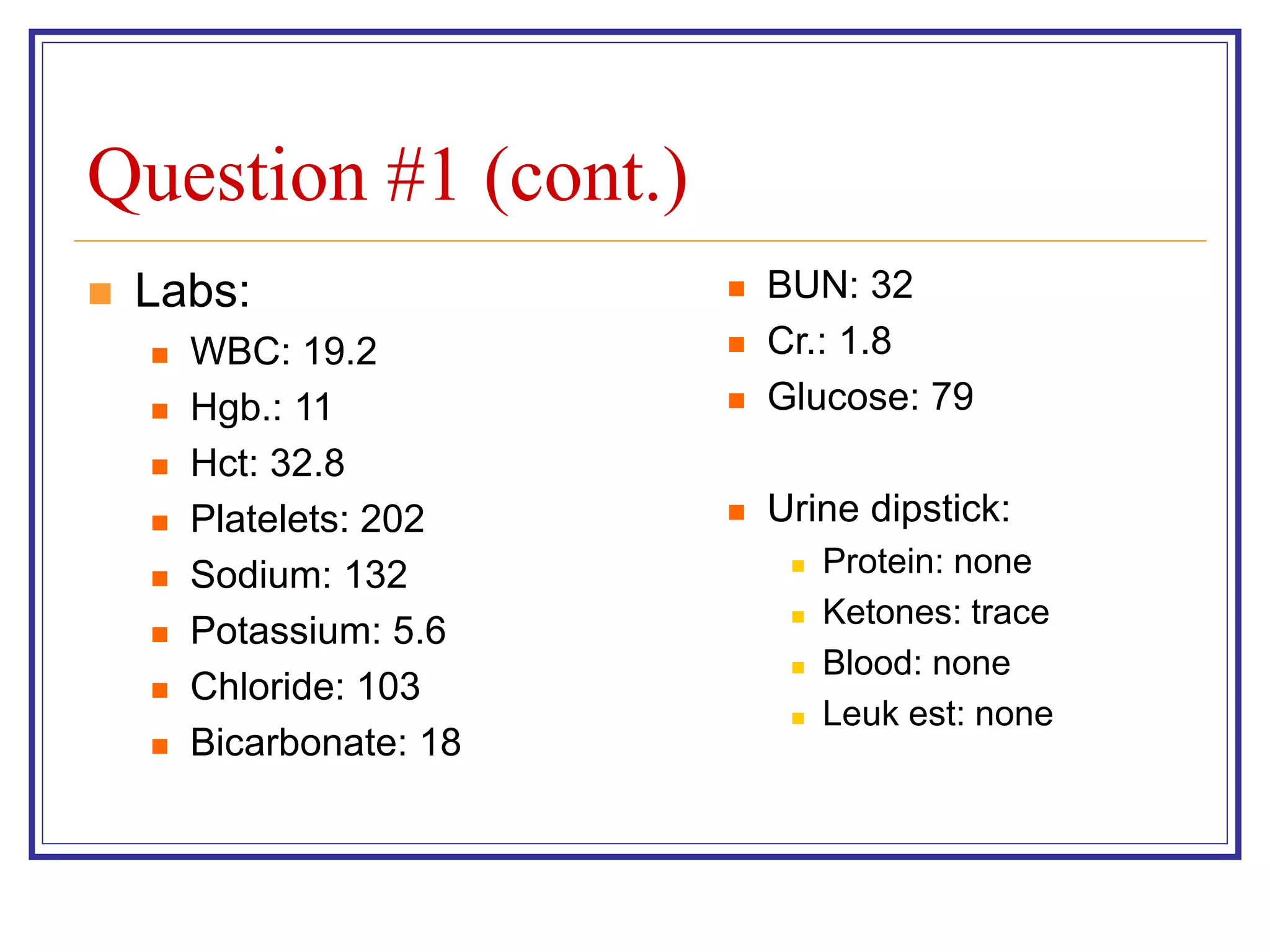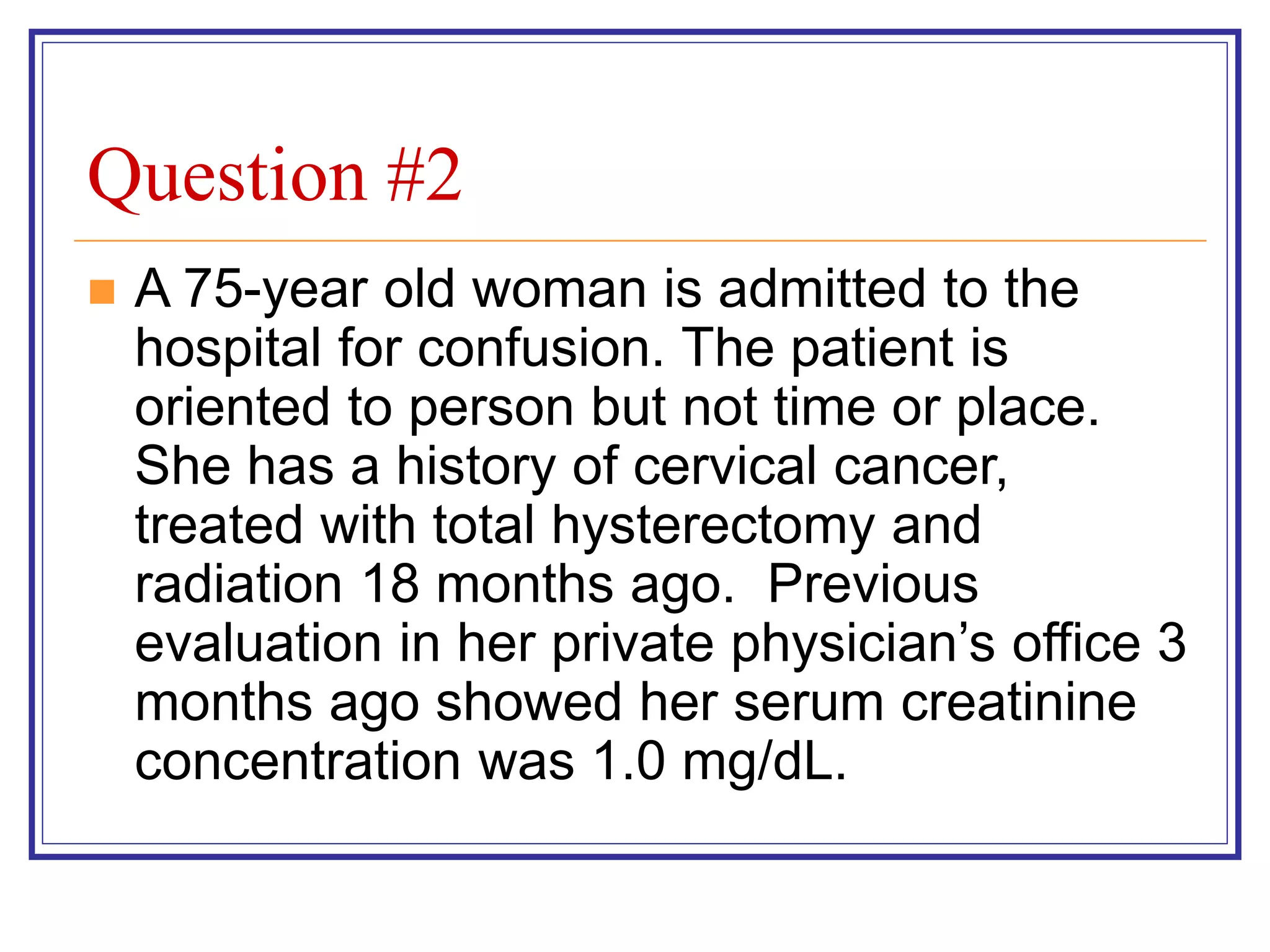This patient is at high risk for prerenal acute kidney injury secondary to dehydration from her diarrhea. Key things to assess:
- Volume status and hydration status
- Urine output
- Serum creatinine and BUN (to monitor for worsening renal function)
- Stool studies to check for C. difficile (given the nursing home outbreaks)
- Electrolytes to monitor for abnormalities like hypokalemia
- Consider IV fluids for rehydration if volume depleted
The goals of treatment would be rehydration, treatment of any infection if present, and monitoring for worsening kidney function which may require renal replacement therapy like dialysis. Addressing the underlying cause of the diarrhea
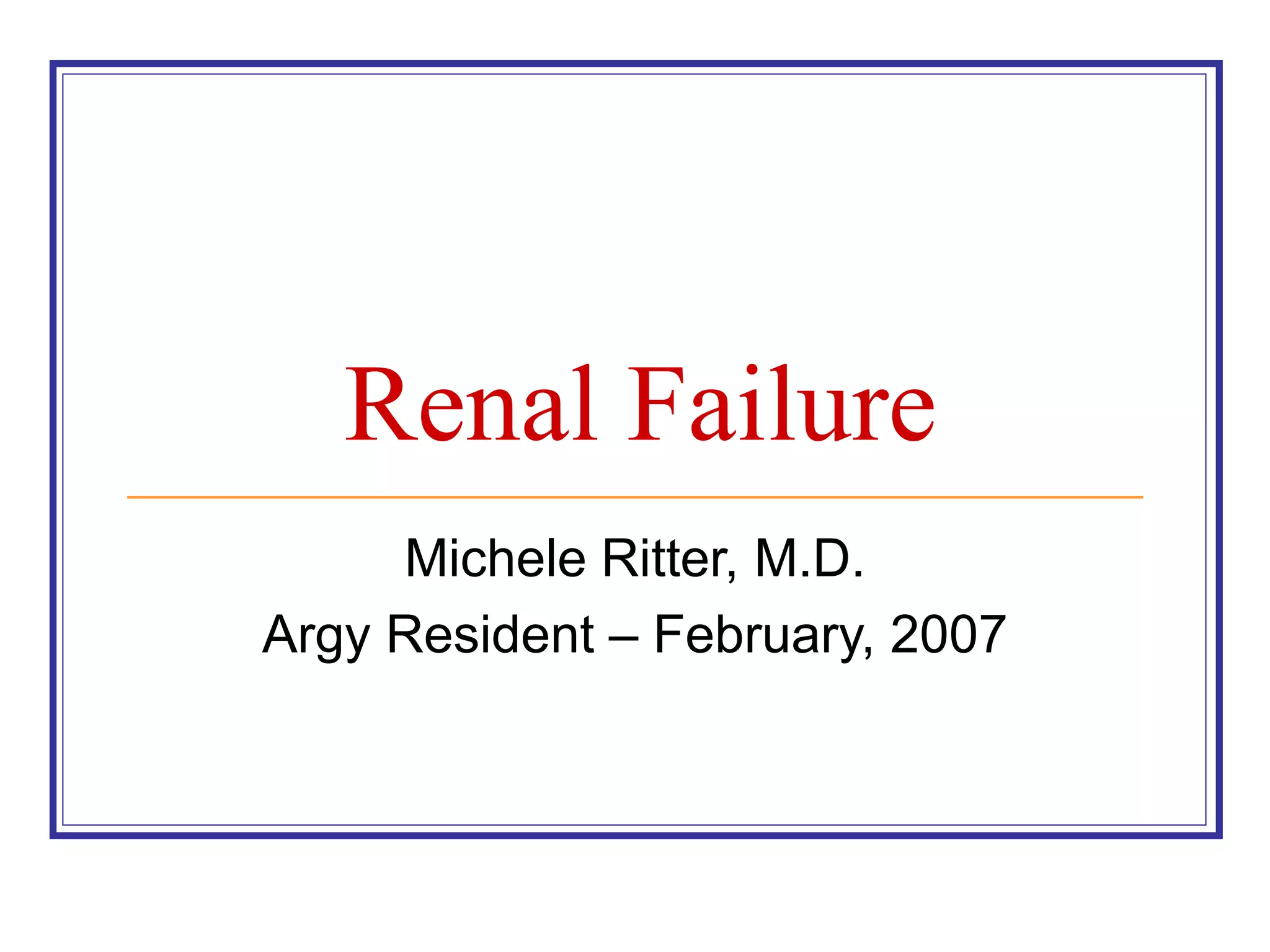
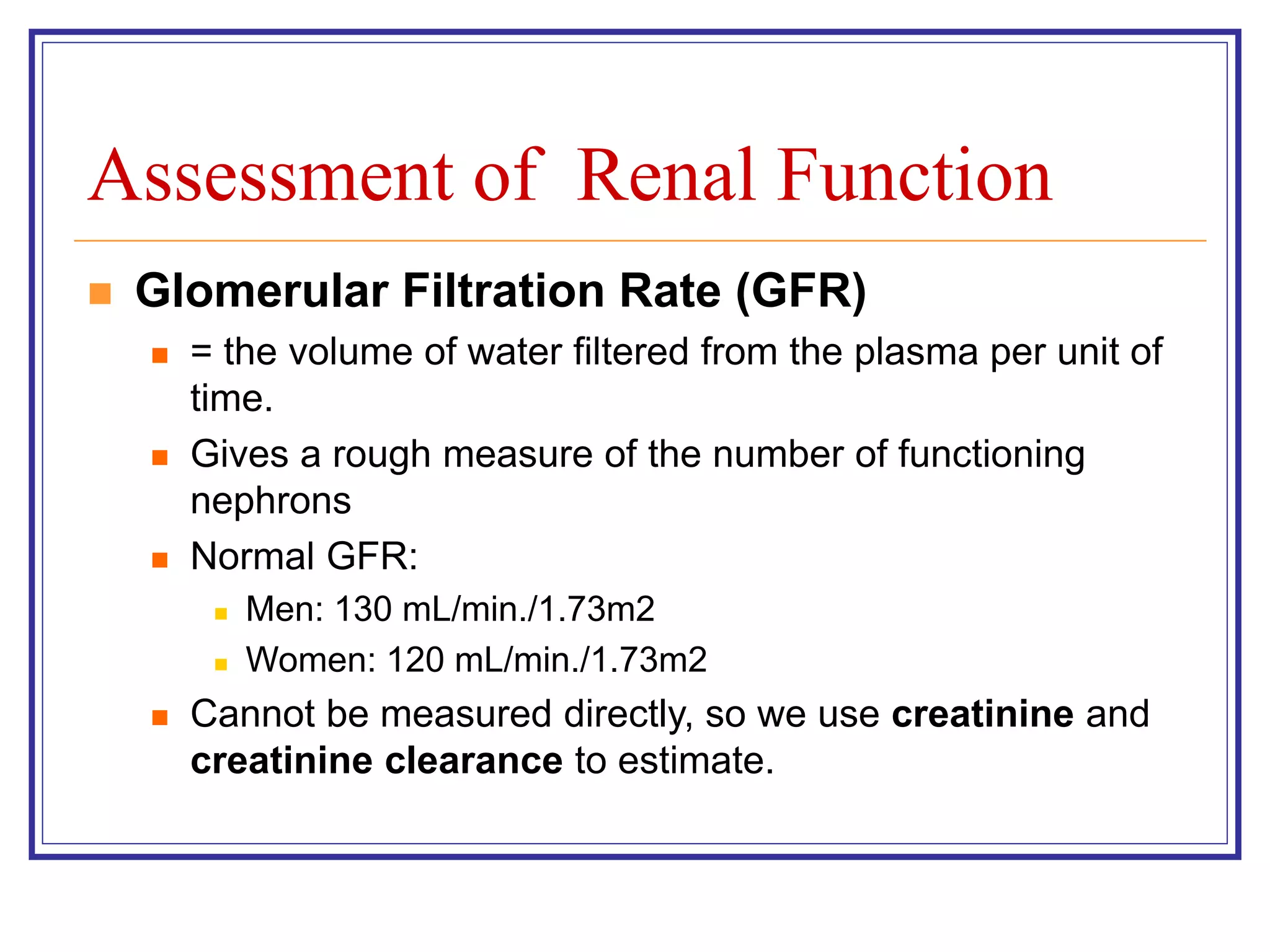

![Assessment of Renal Function (cont.)
Creatinine Clearance
Best way to estimate GFR
GFR = (creatinine clearance) x (body surface area in m2/1.73)
Ways to measure:
24-hour urine creatinine:
Creatinine clearance = (Ucr x Uvol)/ plasma Cr
Cockcroft-Gault Equation:
(140 - age) x lean body weight [kg]
CrCl (mL/min) = ——————————————— x 0.85 if
Cr [mg/dL] x 72 female
Limitations: Based on white men with non-diabetes kidney disease
Modification of Diet in Renal Disease (MDRD) Equation:
GFR (mL/min./1.73m2) = 186 X (SCr)-1.154 X (Age)-0.203 X (0.742 if
female) X (1.210 if African-American )](https://image.slidesharecdn.com/renalfailure-230502193723-c0c5173f/75/Renal-Failure-ppt-4-2048.jpg)
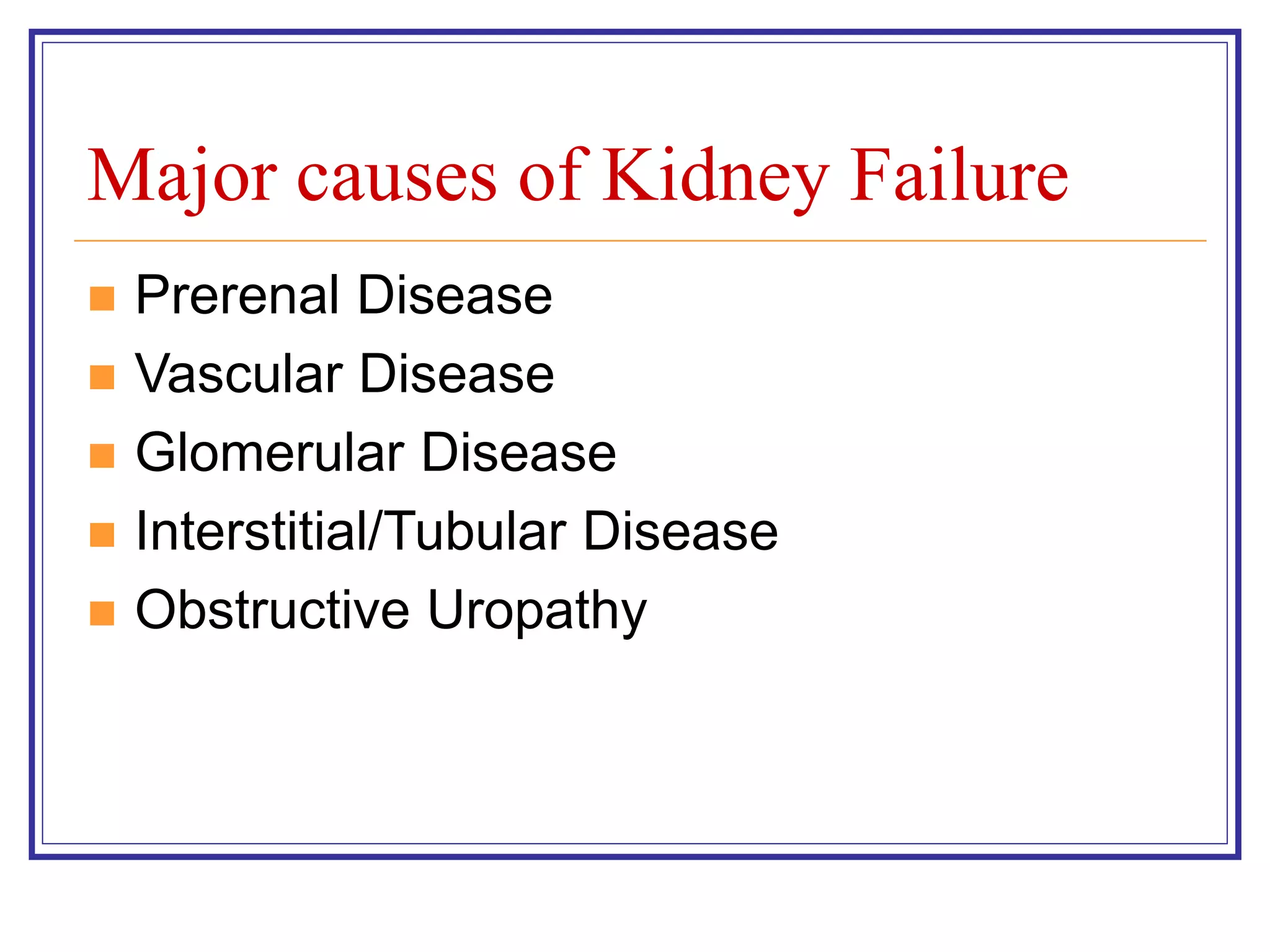

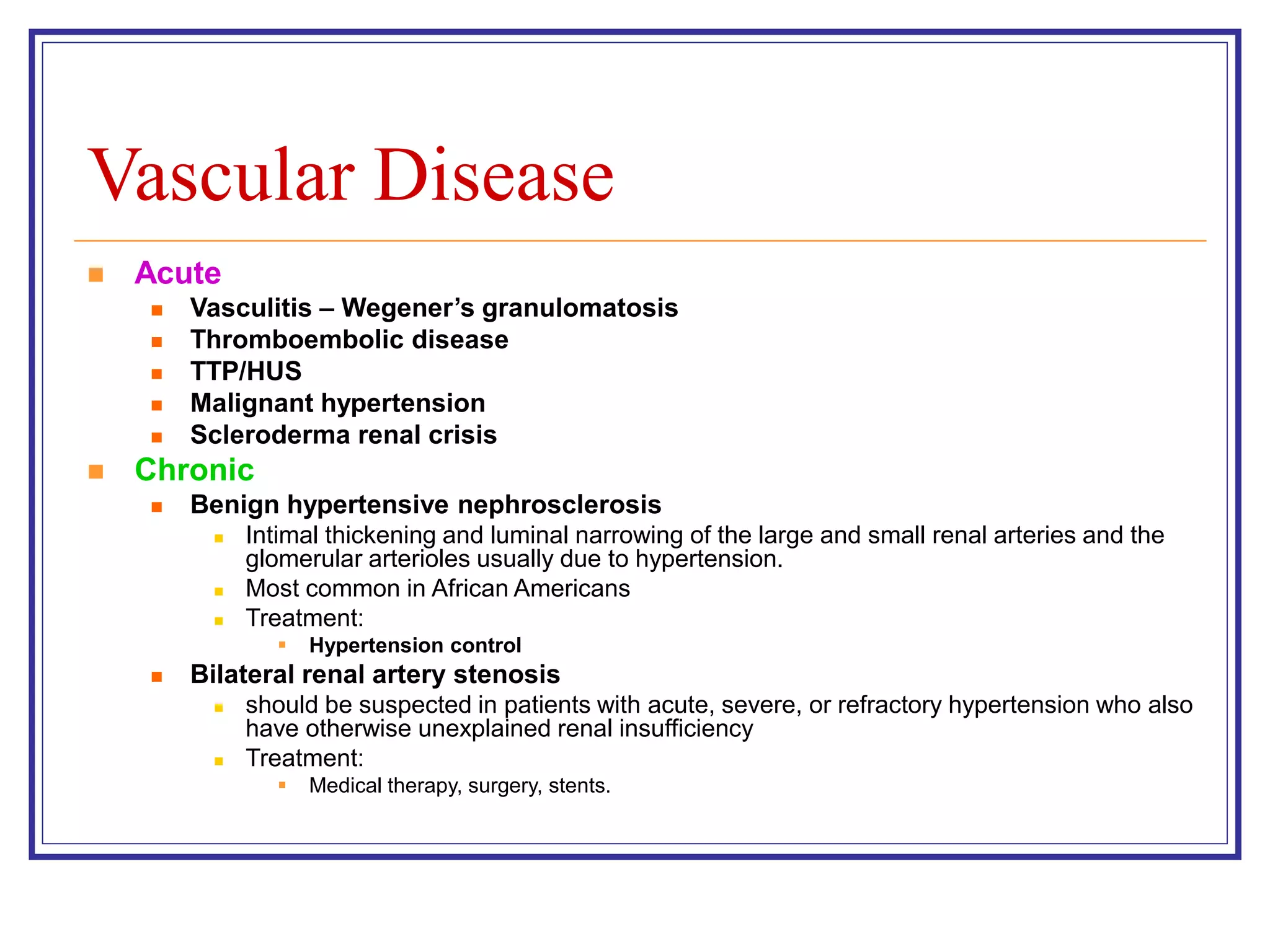

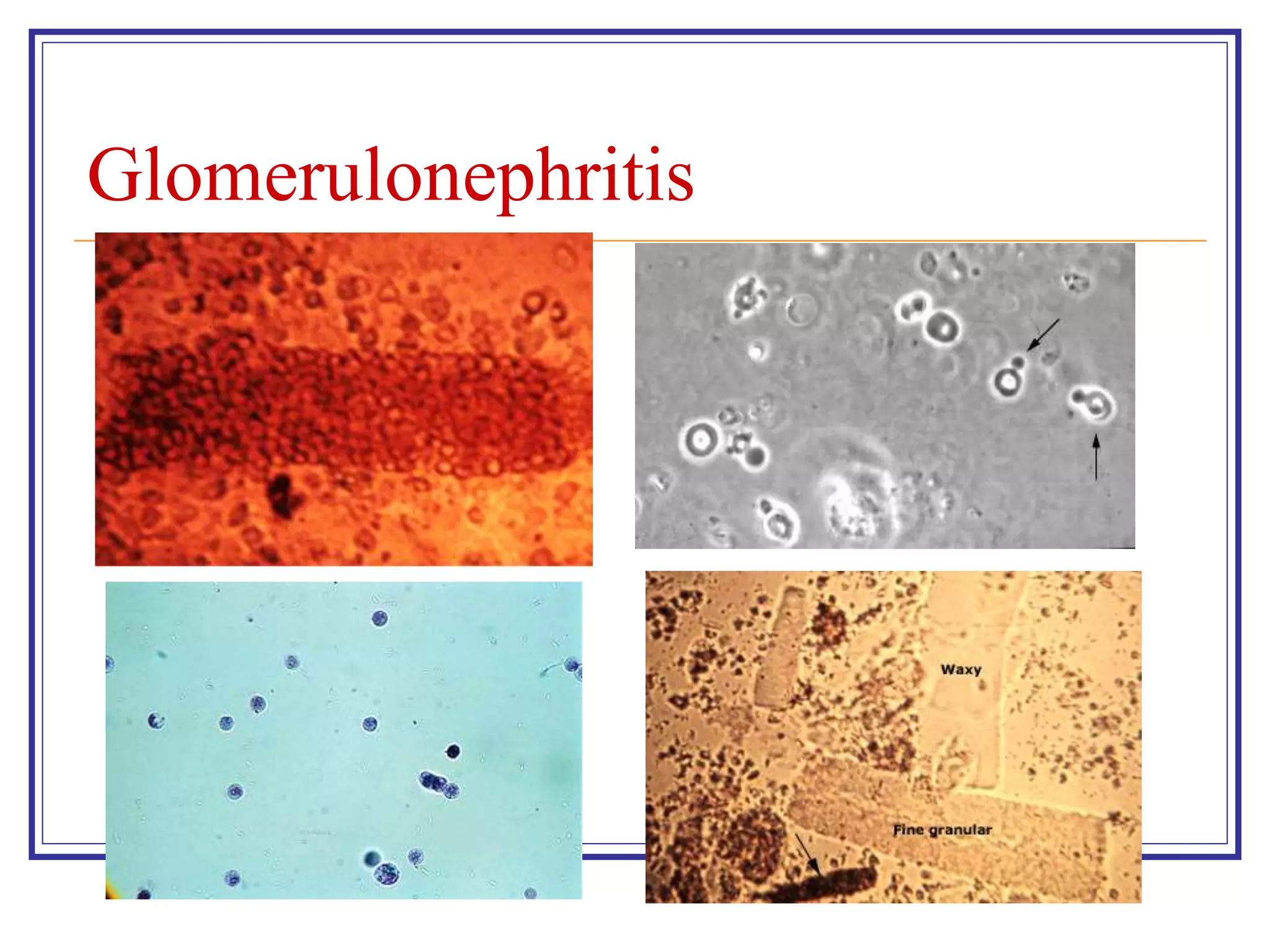




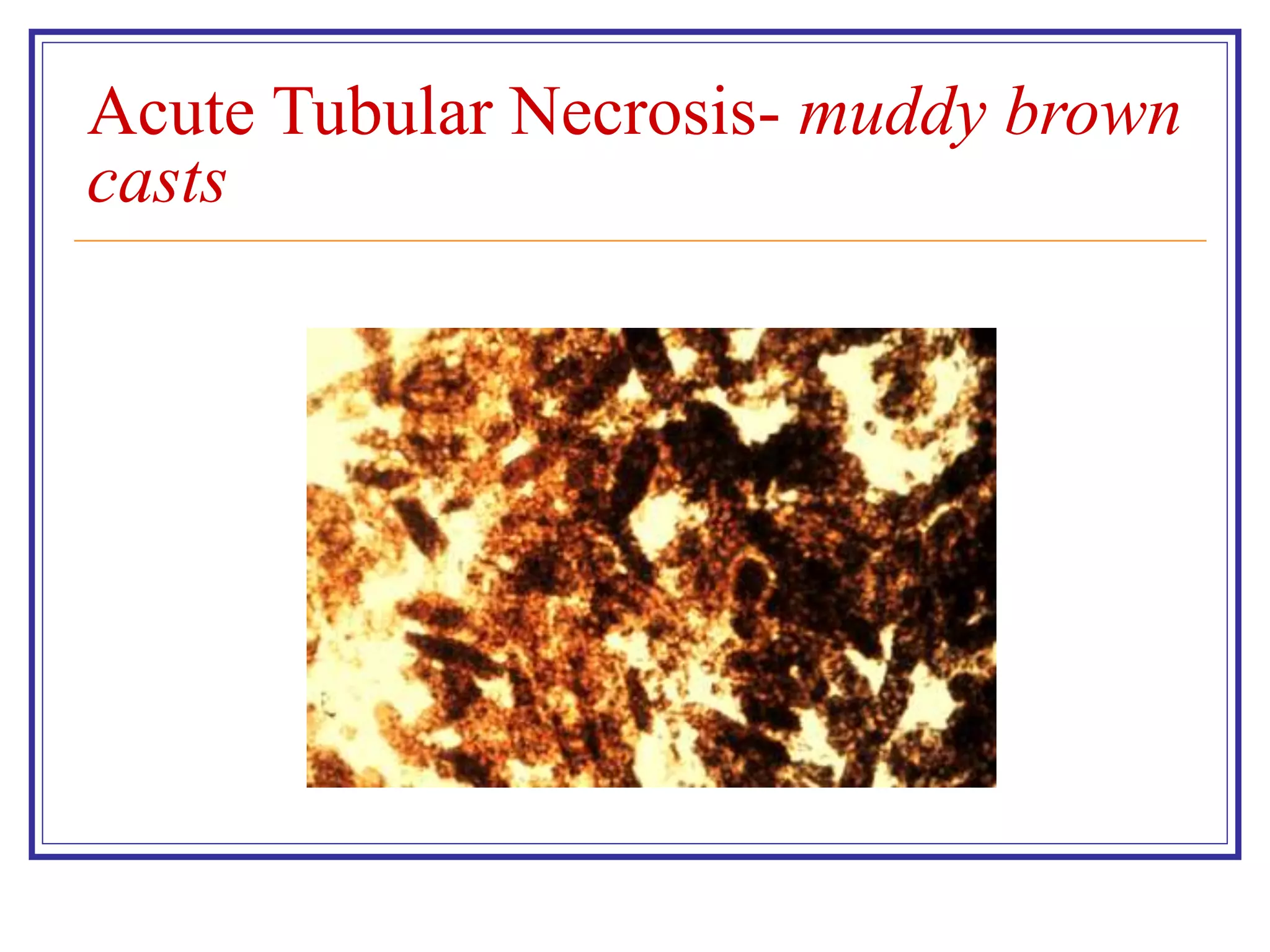





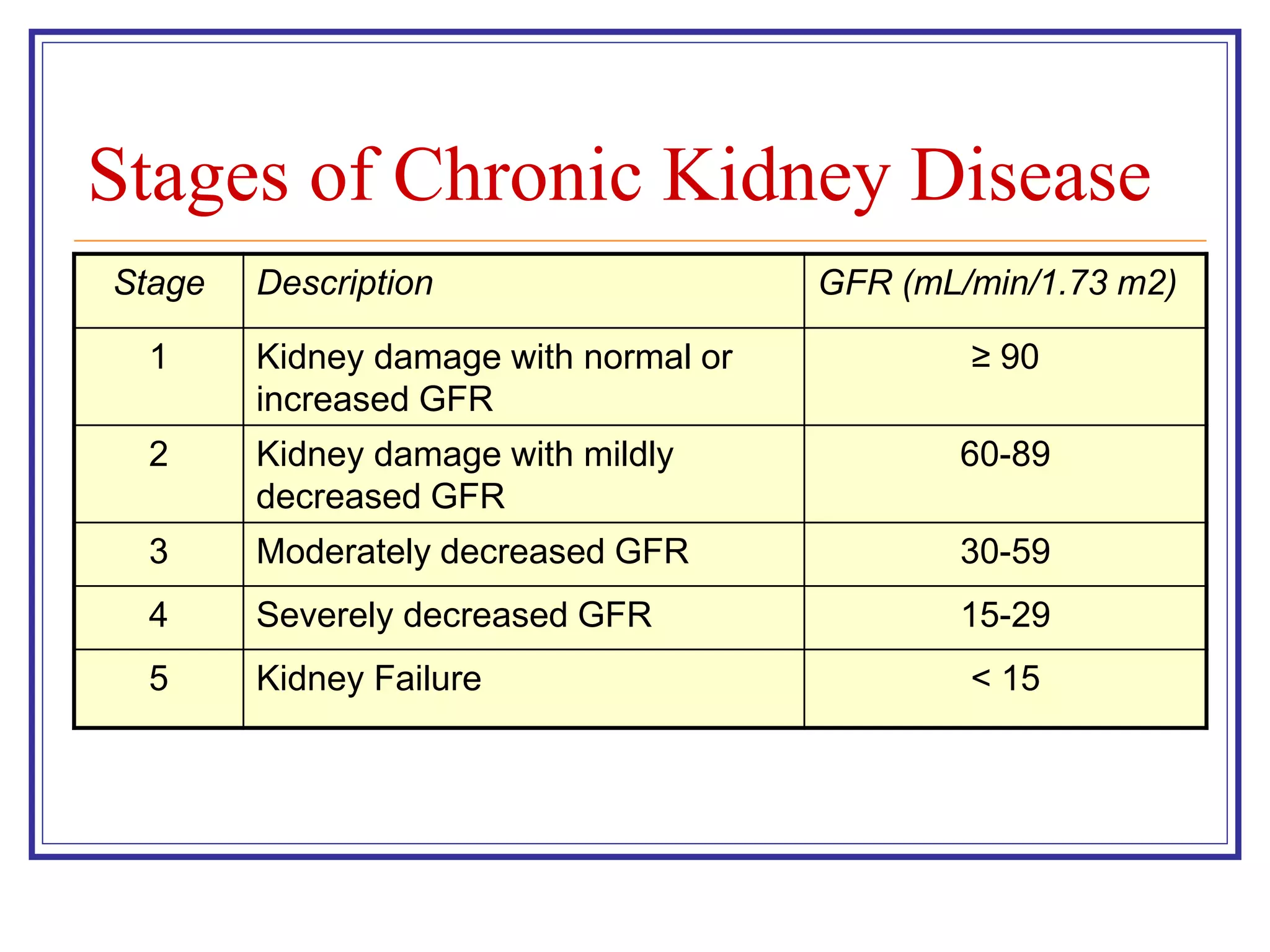





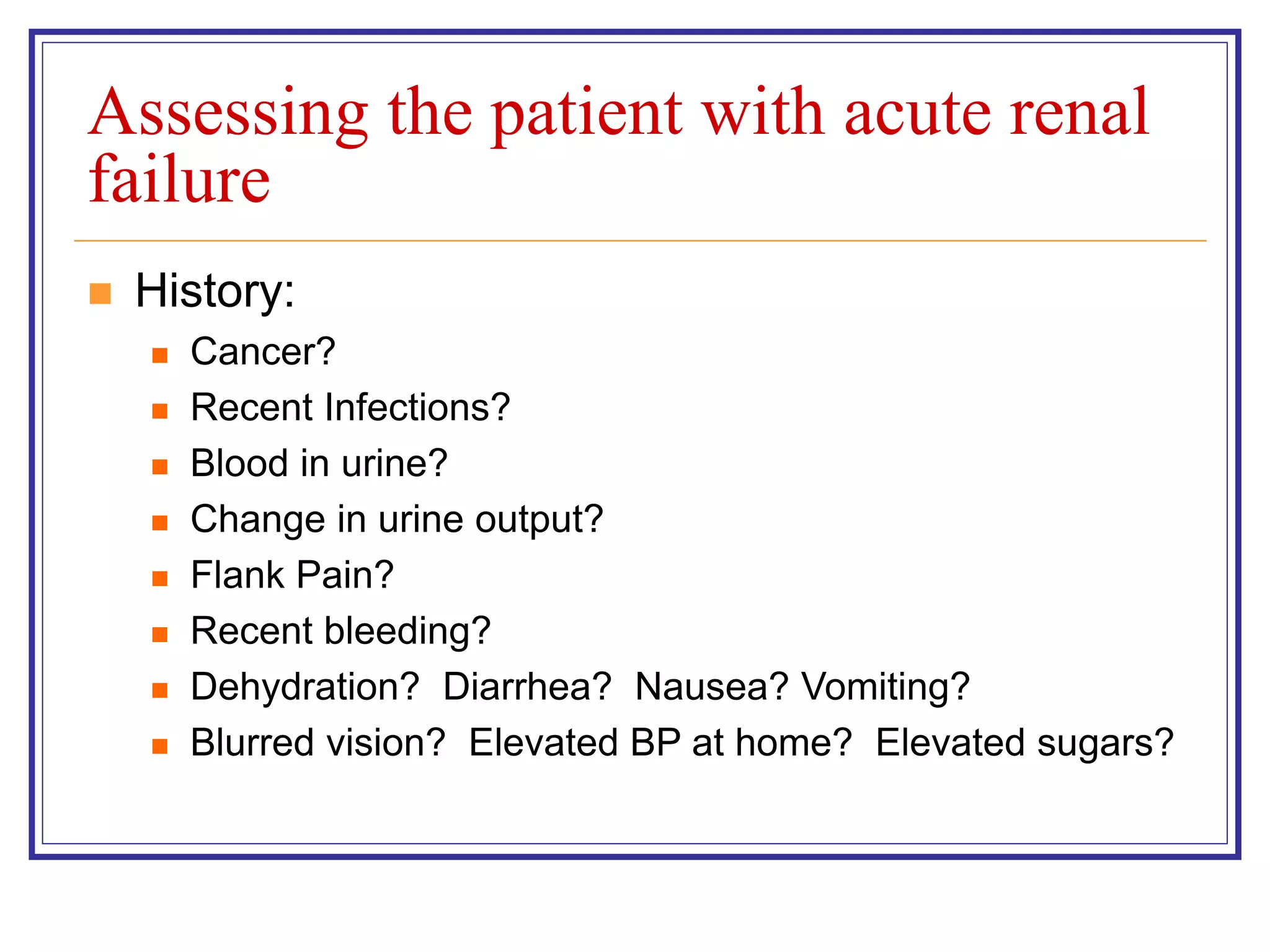




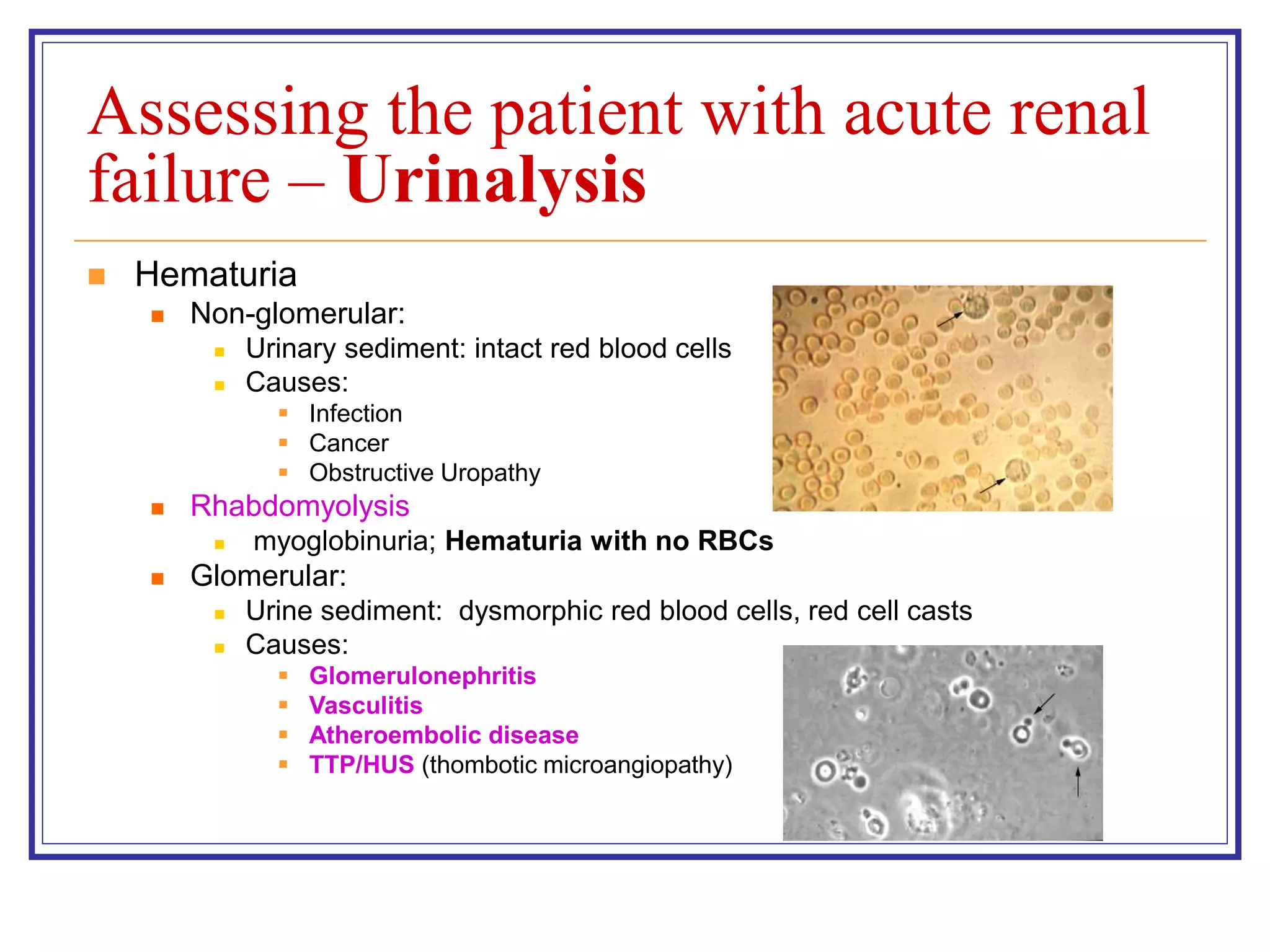


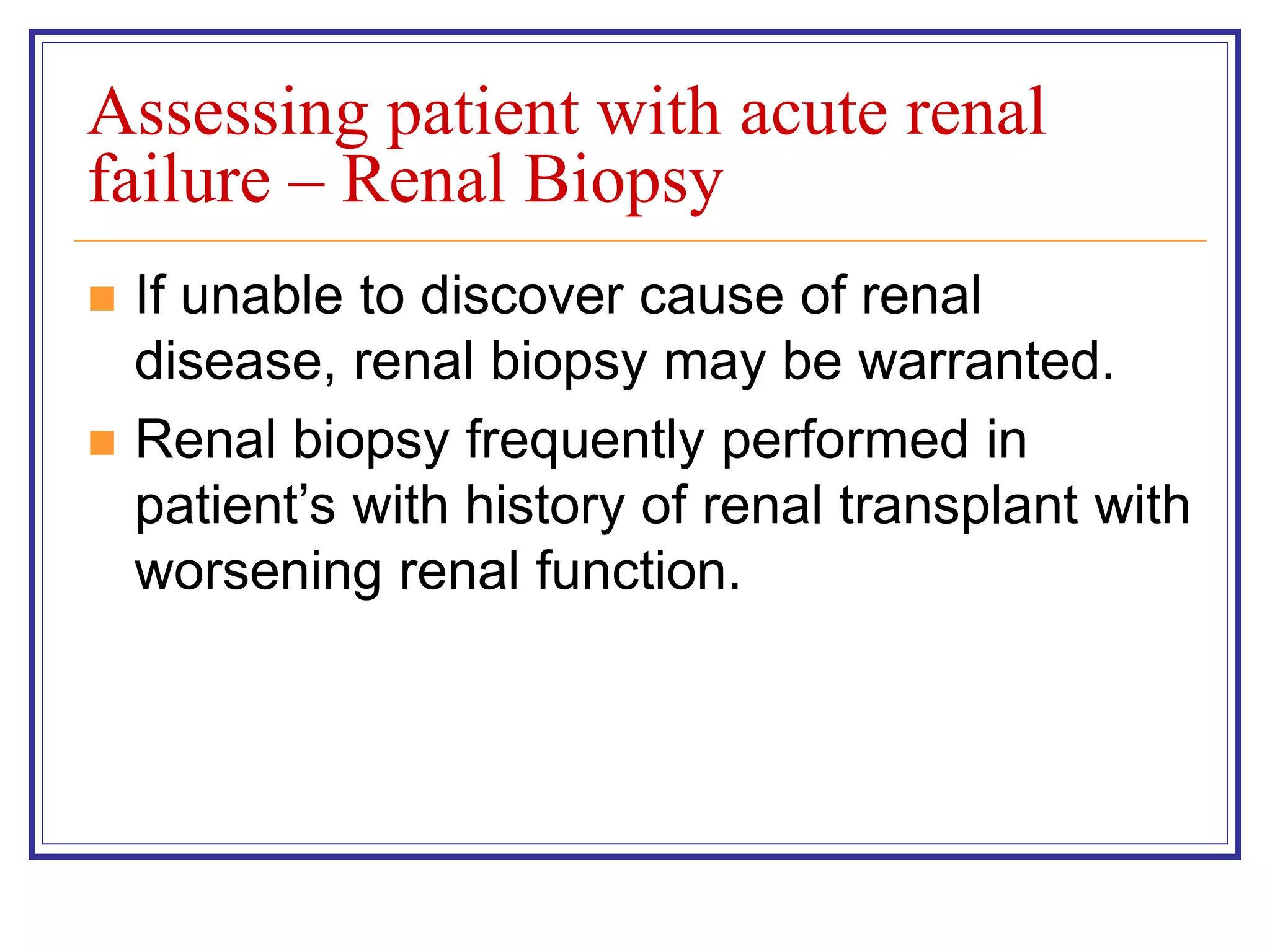
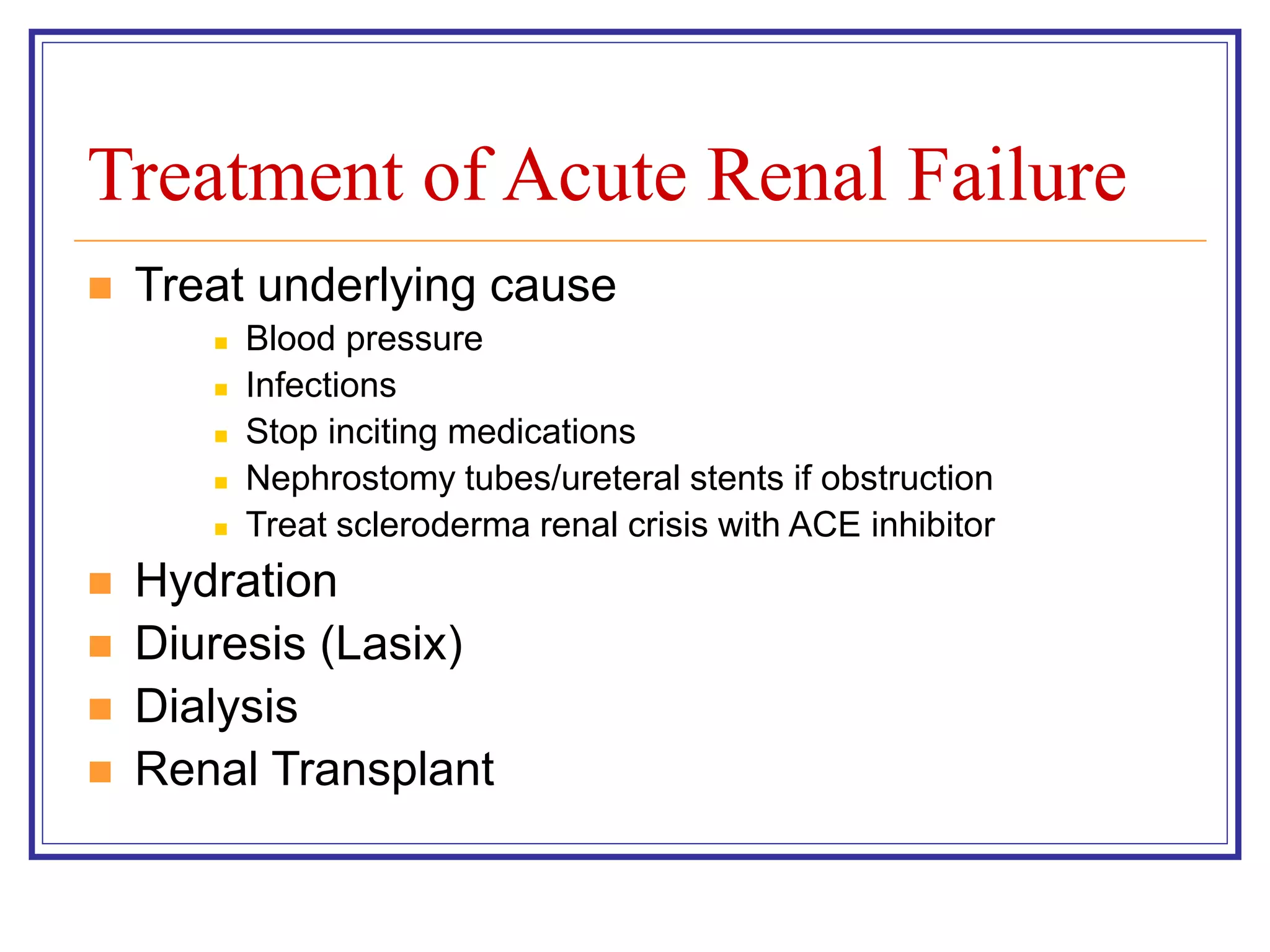
![Indications for Hemodialysis
Refractory fluid overload
Hyperkalemia (plasma potassium concentration >6.5 meq/L)
or rapidly rising potassium levels
Metabolic acidosis (pH less than 7.1)
Azotemia (BUN greater than 80 to 100 mg/dL [29 to 36
mmol/L])
Signs of uremia, such as pericarditis, neuropathy, or an
otherwise unexplained decline in mental status
Severe dysnatremias (sodium concentration greater than 155
meq/L or less than 120 meq/L)
Hyperthermia
Overdose with a dialyzable drug/toxin](https://image.slidesharecdn.com/renalfailure-230502193723-c0c5173f/75/Renal-Failure-ppt-36-2048.jpg)



